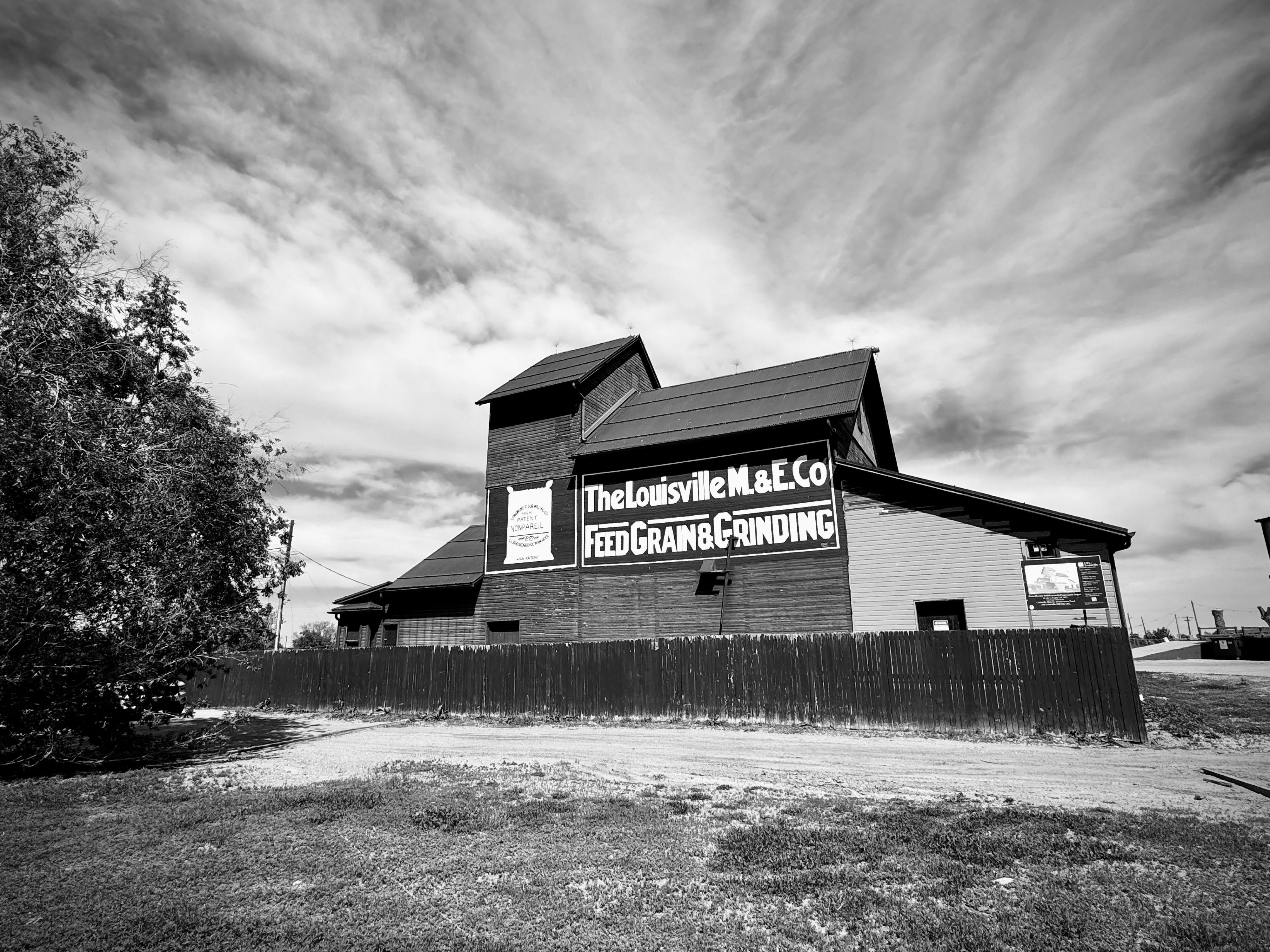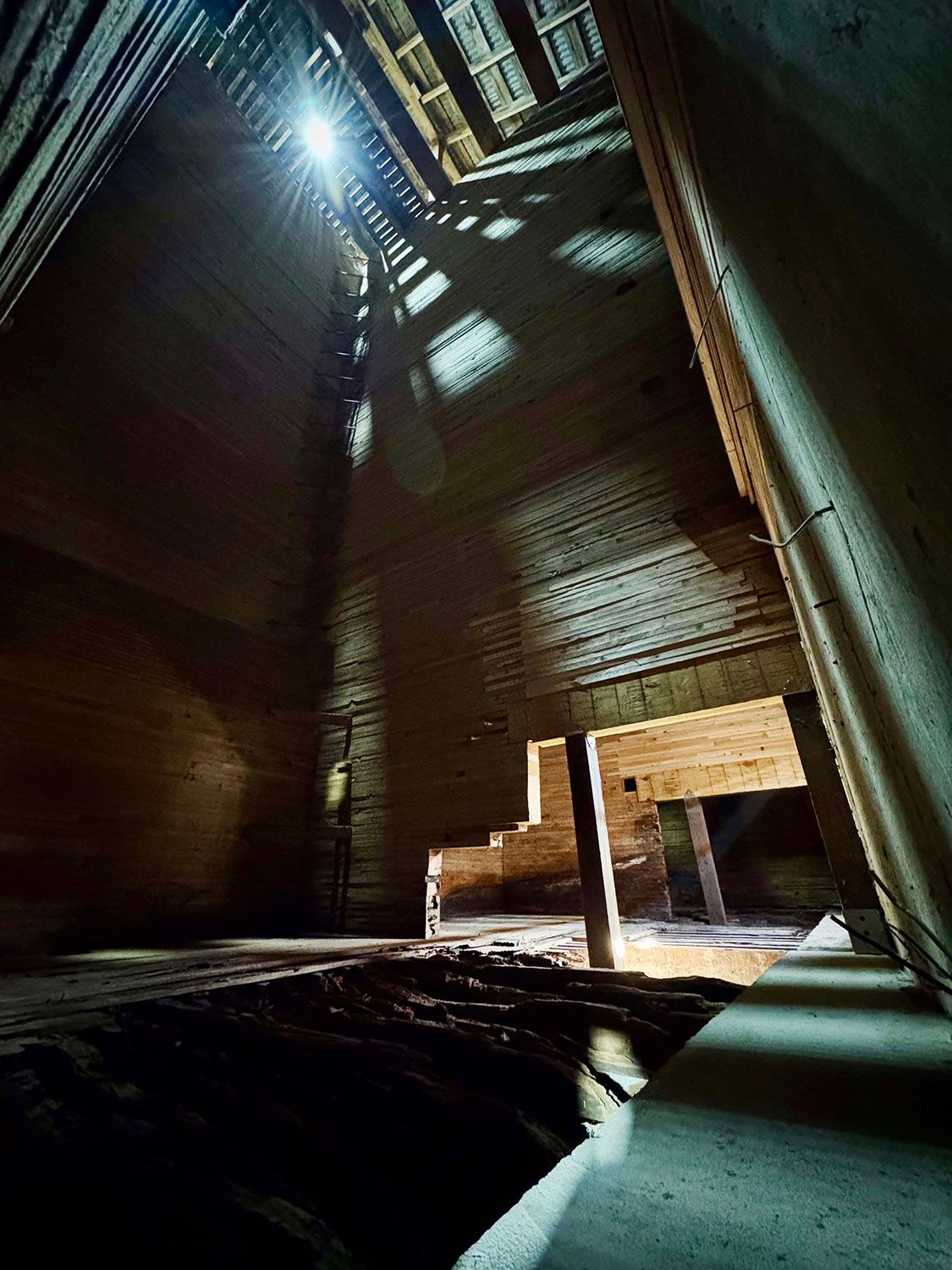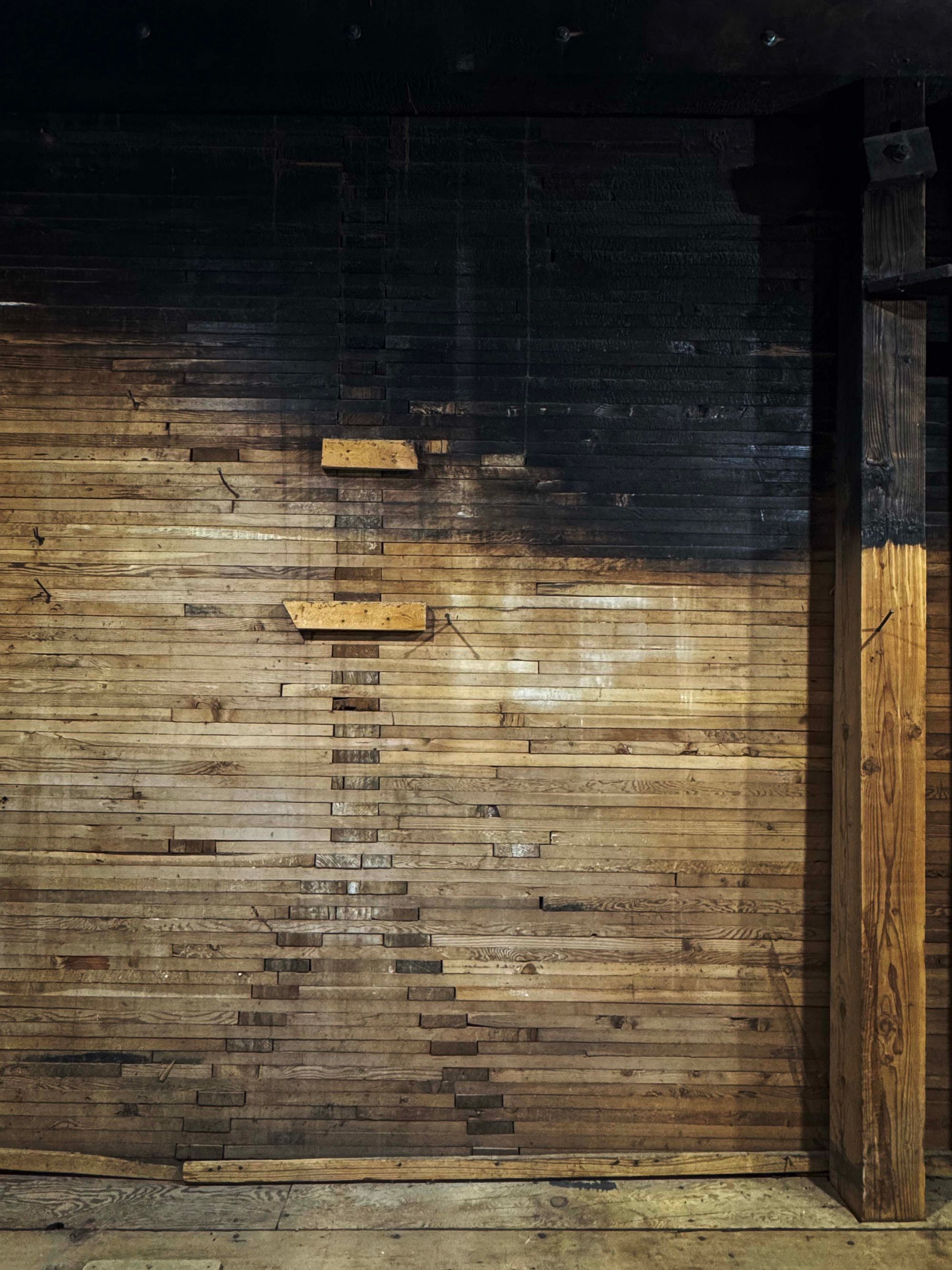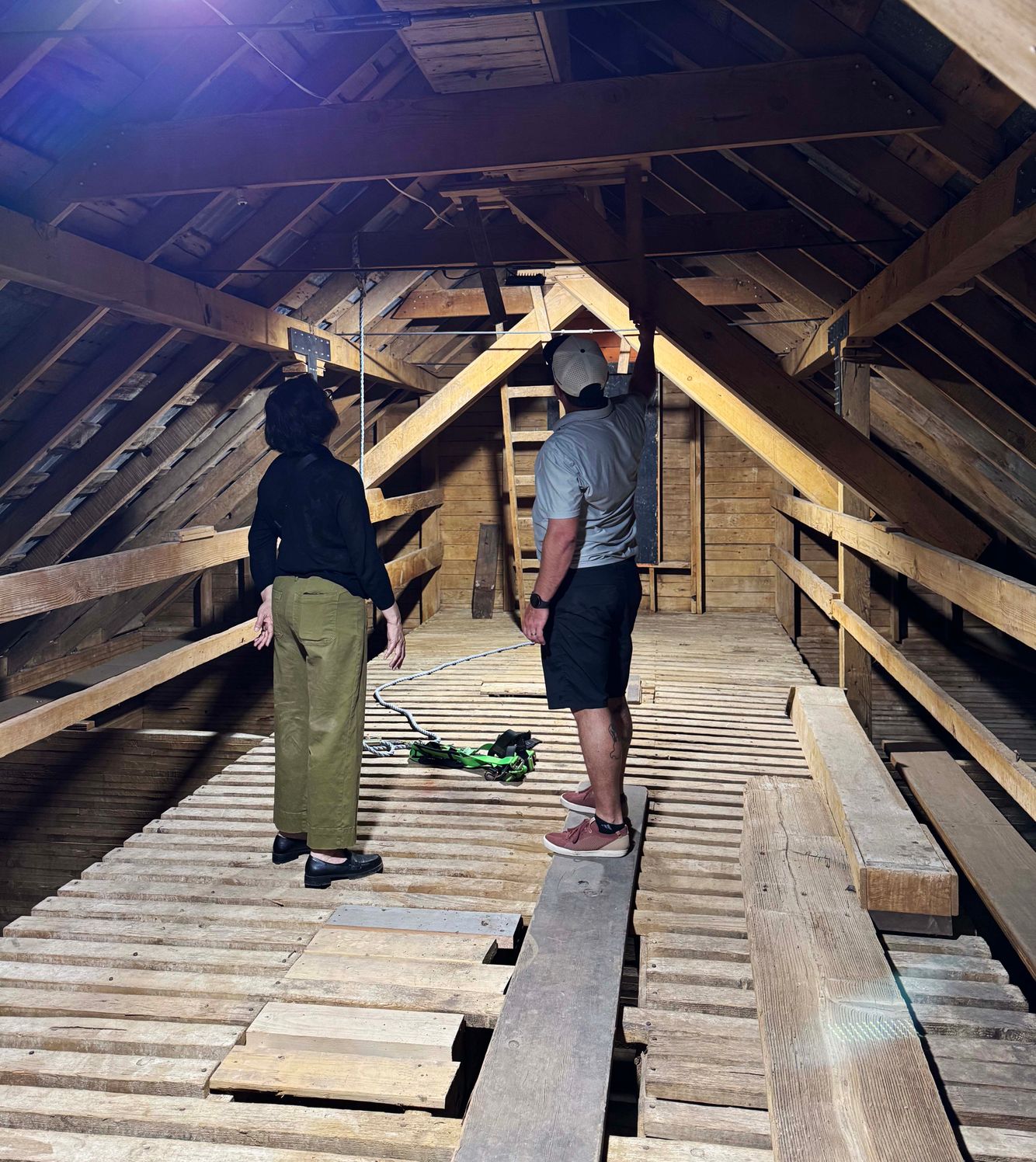In the heart of downtown Louisville, Colorado stands one of the last remaining wooden grain elevators in Colorado. Built in 1905 by pioneering grain entrepreneur, John K. Mullen, this iconic structure has stood as a symbol of community between neighbors, industries, and eras for over a century. From its beginnings in agriculture and mining to the bustling town we know today, the Grain Yard's elevator has been a significant contributor to Louisville’s economic evolution.

The History of the Grain Yard

Reminder of an Industrial Past
In the early 1900s, the Grain Yard building served as a vital piece of Boulder County’s agricultural economy. Located on a long-gone railroad spur named the Acme Switch, the grain elevator linked local farmers to the broader region. The Grain Yard’s slight angle between Front Street and the existing railroad tracks pays homage to the Acme Switch and its namesake, the Acme Mine.
Beyond being a historically symbolic building, the Grain Yard is a touchstone of Louisville’s cultural history. It carries echoes of the Irish community who helped build Louisville from the ground up, and of John K. Mullen himself, who expanded the Hungarian milling process to Colorado.

Surviving Fire & Time
The grain elevator’s stacked wood plank construction is not only beautiful but exceptionally rare. Designed to create smoother interior walls that prevented grain from sticking, it's a classic example of form serving function.
Very few wooden grain elevators remain today. Grain dust is highly combustible, and because these buildings were often located near railroad tracks where sparks were common, fires was a constant threat. Many wood elevators were replaced every few years, and most buildings eventually added metal siding to reduce the risk. Although the Grain Yard has still retained its original wooden construction, it did not completely escape the flames.
In the 1950s, a fire believed to have been started by spontaneous combustion damaged the interior of the building. The charred wood still visible today highlights the building’s resilience, while honoring the bravery of the Louisville firefighters who saved it.
The grain elevator’s survival is a testament to both the strength of its materials and the enduring spirit of this community. It remains one of the most historically and visually significant buildings tied to Louisville’s agricultural roots.

The Next Chapter Begins
We are honoring the grain elevator’s legacy by thoughtfully transforming the building into the Grain Yard, a modern public house where today’s community creates tomorrow’s history. We’re focused on preserving what makes this place so special, from the architecture to the atmosphere, while building something entirely new: a space open morning, noon, and night for gatherings of all kinds.
As we begin to write this next chapter of the Grain Yard's story, we hope you’ll join us in writing it together. With every restored floorboard and every new idea, we’re creating a place that feels like home, built by neighbors, for neighbors.
Read more of the history behind the Grain Yard building in this link provided by the Louisville Historic Museum
